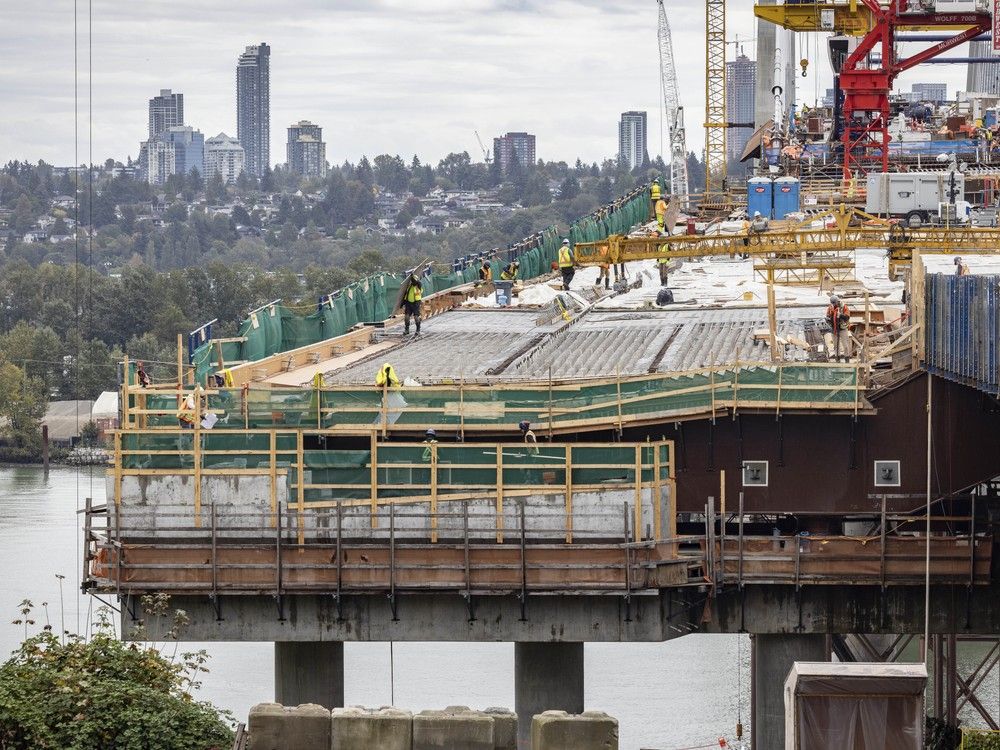
Anticipation is building for the opening of one of the most significant infrastructure projects in B.C., the replacement for the Pattullo Bridge.
The province recently announced that the four-lane replacement bridge connecting Surrey and New Westminster will be completed by Christmas. Postmedia News interviewed project director Wendy Itgawa last week to learn more about the massive bridge and what commuters can expect.
The bridge will feature a single tower rather than the common two, and at 167 metres the bridge’s tower will be the tallest in the province. With dedicated paths on either side for pedestrians and cyclists, wider lanes for vehicles and a centre median barrier, the new bridge promises to give commuters a more pleasurable and safe driving experience.
And those dreaded “ice bombs” — chunks of snow or ice that fall from cables — that have damaged vehicles on other bridges are less likely on this new bridge, Itgawa said.
“I don’t think there’s ever a foolproof system that works, but we feel that we’re putting in something that’s been designed for the bridge and tested,” she said.
“There is a snow- and ice-removal system that has been designed specifically for this bridge and it has been designed in a lab, so that will be installed. The cables of this bridge are not over the roadway — so they are vertical, so the bridge design itself should help in that respect.”
The Pattullo Bridge replacement project was started after years of safety concerns over the existing bridge. A 2016 report found that the current bridge, built in the 1930s over the Fraser River, no longer meets safety standards. In 2018, the province approved the construction of a new bridge.
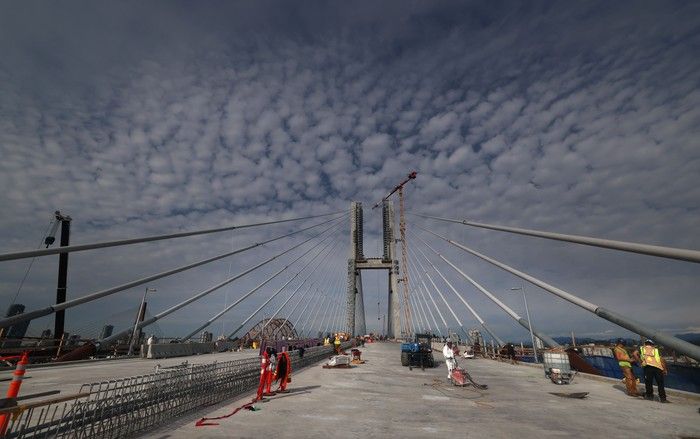
“The current, existing bridge has a lot more narrow lanes and doesn’t have a centre median,” Itgawa said. “The existing bridge is 90 years old, so it’s past its useful life, so a new bridge was needed.”
The Pattullo is half the width of the new bridge, the Transportation Ministry said.
The new bridge will not share the name of the existing one. It will instead be given a name by the Kwantlen and Musqueam First Nations that will be displayed on the upper cross beam along with Indigenous artwork.
Both nations are working together to provide a hən̓q̓əmin̓əm̓, pronounced HUN-kuh-MEE-num, name for the new bridge as both the Kwantlen and Musqueam share deep connections to the land.
It wasn’t until 2020 that a construction company, Fraser Crossing Partners, was contracted for the project. Soon after the plan was in motion, COVID-19 hit and contributed to a series of delays.
The new bridge was originally scheduled to open in 2023, then it was pushed to 2024 and again to this fall. It’s now on track to begin phasing in by Christmas, Itgawa said, adding that supply chain issues led to further delays.
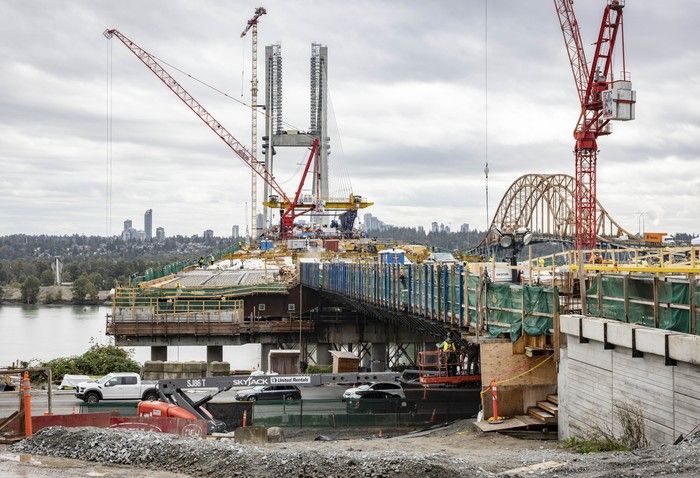
When Postmedia visited the new bridge on Tuesday, only two of the 80 cables were still being installed, with more than 400 workers working 24 hours a day to meet the approaching deadline.
Each of the cables has 65 to 80 strands inside and the longest cable is about 300-metres long.
A gap of about three metres still remained between the two sides of the bridge, which Itgawa said will be complete later this month.
Costs for the new bridge increased due to the extension of the timeline for completion. While a government sign near the site still states its cost at $1.377 billion, the project has a total price of $1.673 billion.
A point of contention was the decision to make the new bridge four lanes instead of six. The Pattullo has four lanes with opposing sides of traffic separated only by stakes. Pedestrians and cyclists also share one walkway and there is not much of a shoulder between the walkway and traffic.
New West was supportive of four lanes, often stating there is a lack of road space on its side of the bridge to route traffic through mostly residential areas. The decision to go with four lanes was ultimately made by the TransLink Mayors’ Council.
“It is designed and constructed in a way that, if in the future, a six-lane bridge is required, that it could be expanded. And therefore the foundation, all the structural things are built to accommodate a future six-lane expansion,” Itgawa said.
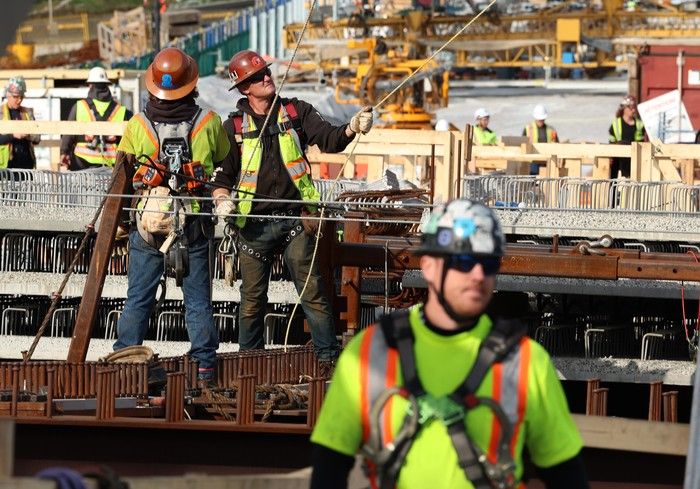
An extension would require converting the walkways on each side of the new bridge into vehicle lanes and building new pedestrian pathways.
However, it wouldn’t just be about expanding lanes, the project director said.
“You really have to look at the regional road network, of how you’re tying into it. If there are a number of upgrades, the roads will need to be (upgraded) as well.”
The existing bridge will be demolished early next year in multiple phases. But the transition from closing the existing bridge to opening the new one will also take some time, Itgawa explained.
Because the new bridge will have to tie into existing road network — King George Boulevard on the Surrey side and McBride Boulevard on the New West side — “there’s quite a lot of traffic management that needs to happen in order to do the switchover,” she said.
“We’ll have to close the existing bridge for a week, but the new bridge won’t be open. So during that phase, there will not be a crossing for about a week.”
There will also be a time when both bridges will be operating partially, and the new bridge isn’t expected to completely open all four lanes until early next year.
“Once the bridge is open, there’s lots more work needed in Surrey and New West as we complete the multi-use paths and some of the road connections and the demolition of the existing bridge,” Itgawa said.
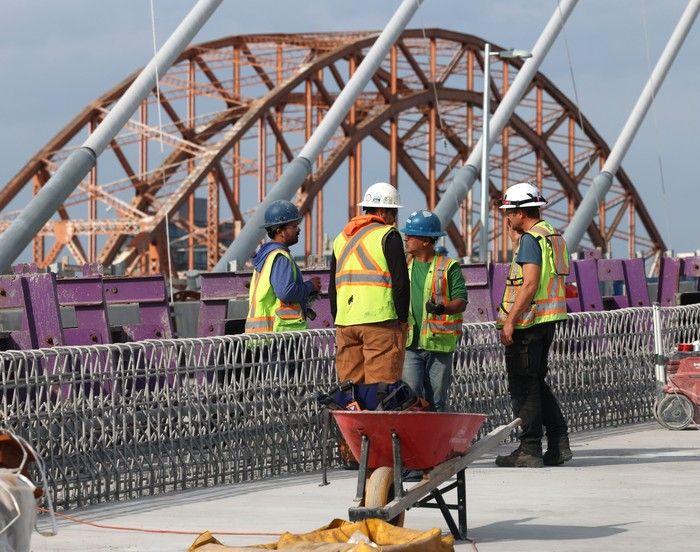
By the numbers
2,500: The number of precast deck panels on the cable-stayed bridge. Each panel will be about 6 1/2-metres long and weigh 17 tonnes — equivalent to about three elephants.
62,400: The amount, in cubic metres, of concrete being used to build the bridge — enough to fill 25 Olympic-size swimming pools.
1,235: The total length, in metres, of the new bridge — roughly equivalent to 12 Canadian football fields.